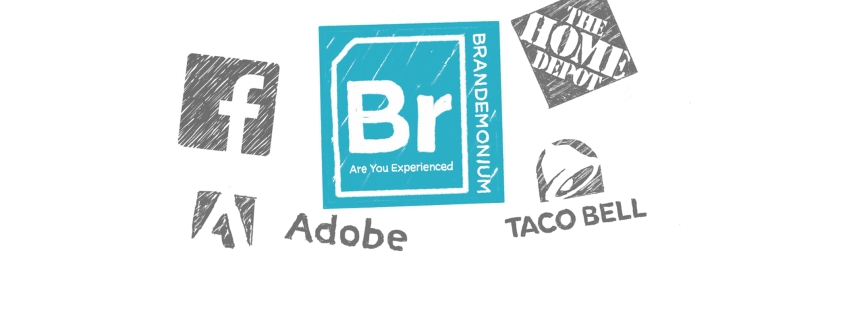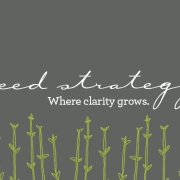Defy the Standards: 4 Pioneering Insights from Brandemonium 2019
No matter the industry, there was one theme that rang loud and clear through many of the speakers during this year’s Brandemonium conference in Cincinnati, OH: a new era is upon us. From the ways in which marketers look at and connect with consumers, to how brands are built and consumed, the so-called “old ways of doing things” are being left way behind—and fast. Here are the top four insights that helped to bring this spirit to life, and what you can do to get ahead of the curve.
Consumers Are Unreasonable
Innovation culture is focused on something we’ve known all along as humans: that the motivations behind our behaviors aren’t always rational and concrete. In fact, most of the time they’re fairly unreasonable. In a world of need state studies and motivations surveys, it can be easy to rely on these foundational systems to set us in the right direction. But, we should remember that the direction should also account for how we behave as humans when no one’s looking or asking—fairly unreasonably.
Rani Mani (Head of Global Social Influencer Enablement and Employee Advocacy at Adobe) talked a lot about the power of positivity, and how, if we believe as much, the behaviors we feel are unreasonable might not really be so. She used the much beloved quote from “The Phantom Tollbooth”: “Many things are possible just as long as you don’t know they’re impossible.” She makes the connection between this culture of the unreasonable consumer and the transformative power of positivity. Said another way, perhaps the only reason consumers are believed to be unreasonable is because their motivations don’t fit within the systems already set in place by the industry. But, if we broaden the way we think about consumer motivations, that “I felt like it” and because “I like the color yellow” might be as good of a reason as, “I wanted to fill up between meals.” The more we allow for the unreasonable, the closer we get to true consumer behavior.
Let Go of Control
Next year, Gen Z will make up 40% of the world’s consumer base—the largest generation to date. And, with this new generation comes an entirely new way to approach marketing and brand interaction. These digital natives can see through brands who are trying too hard to appeal to them and have little patience for brands who simply don’t try at all. What’s a brand to do, then? Eric Lloyd (Industry Manager, CPG Food & Beverage at Facebook) spoke about how brands must embrace this unique generation of creatives and ultimately get comfortable with letting go of control of their brand.
To Gen Z, your brand is their brand, so they expect to have a say in how brands live in their world. You have likely experienced the success stories of brands that have loosened their strict, “old school” grip on branding elements and found viral, meaningful success (many QSR brands have found this momentum via Twitter). It’s, of course, still important to stand for something—to have a clearly defined voice, look, standards, values and so on. But, it’s equally as important to join the discord, embrace a flexible mindset and see what’s possible when this new generation has a hand in crafting your destiny.
Make Personalization Happen
Lisa Destefano (VP Brand Marketing and Creative at The Home Depot) spoke about the brand’s mission to take marketing to the personal level. By rethinking the purchase journey, they have built a digital ecosystem of data to serve each customer throughout every step of a DIY project. These touchpoints include both opportunities to sell, and ways in which they can serve the customer with education and inspiration along the way. How is this level of personalization possible? According to Destefano, it’s data. A system that collects and makes sense of large amounts of customer data is vital to this sort of approach. “Content may be king, but data is gold.”
While we’ve all heard the buzz that personalization is the new trend, finding a way to live that ideal has been difficult for marketers. The data are cumbersome, the creative is expensive and consumers are confusing. Destefano spoke about overcoming these obstacles by breaking down siloes within the brand. With data, creative and insights groups working together around a focused strategy, a new type of workflow is made possible—one that is able to collect, collaborate and activate data-driven and personalized experiences throughout the new DIY customer journey.
Find the Paradoxes
More than ever, consumers are contradicting themselves, whether in what they tell us or (also) in how they behave. Instead of getting frustrated or ignoring these revelations, Marisa Thalberg (Global Chief Brand Officer at Yum! Brands, Taco Bell) shared the importance of leaning into those paradoxes—or even better yet—seeking them out. Within those paradoxes are the opportunities: relevant consumer tensions to solve.
How to find those paradoxes? First, Thalberg shared the importance of having and stimulating a “fresh eyes” perspective as you look into and observe the consumers, category and culture surrounding your brand. Another way is to look for conventions in and around your category and decide which you will honor and which you will defy. For instance, Taco Bell has intentionally flipped the idea of value on its head in the context of fast food, treating is as a luxury instead of a tradeoff. Thalberg urged brand leaders to be bold while building brand strategies around those paradoxical opportunities you may find.
Between technological advances and the incoming generations, the way we see marketing today is changing—rapidly. These four insights embody just the beginning of the changes that are coming, and hopefully can help inspire your brand to make intentional steps to get ahead of these new standards.
Editor’s Note: Special thanks Angela Jones, Emily May, Taylor Exline-Ward and Catherine Salzman for their contributions to this article.
Connect with us! Follow Seed Strategy on our LinkedIn, Twitter, Facebook and Instagram pages.









